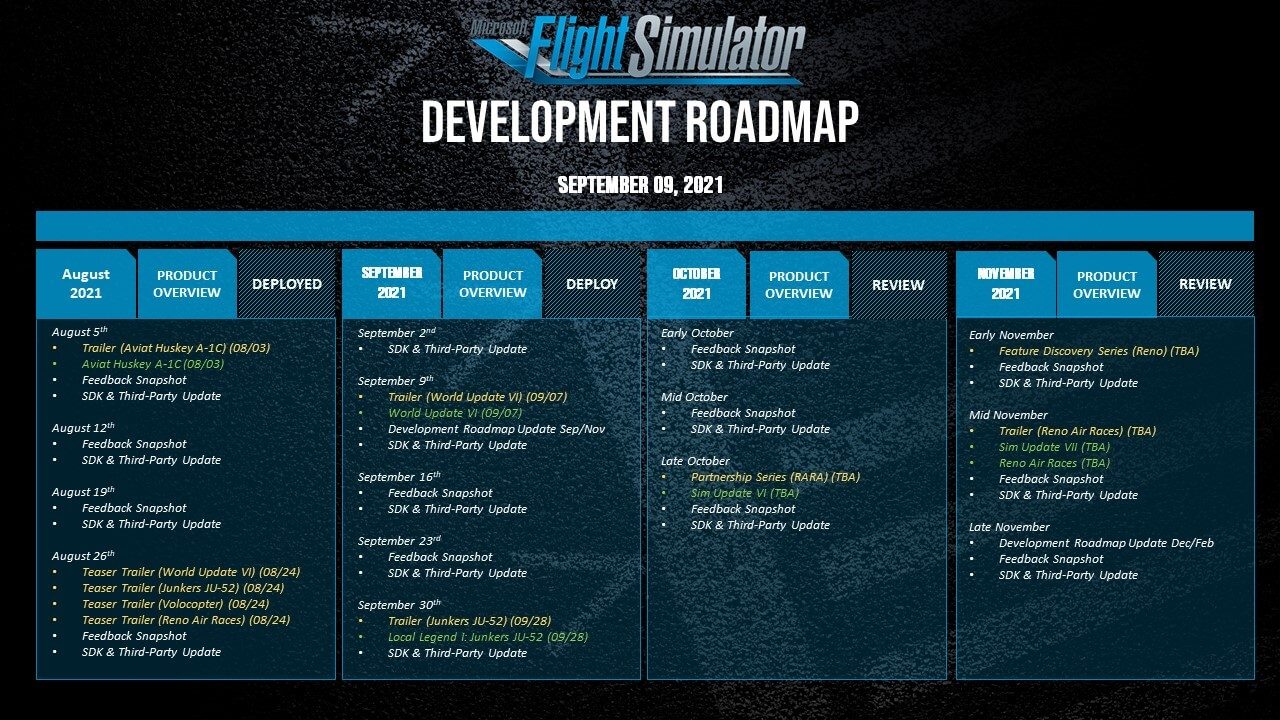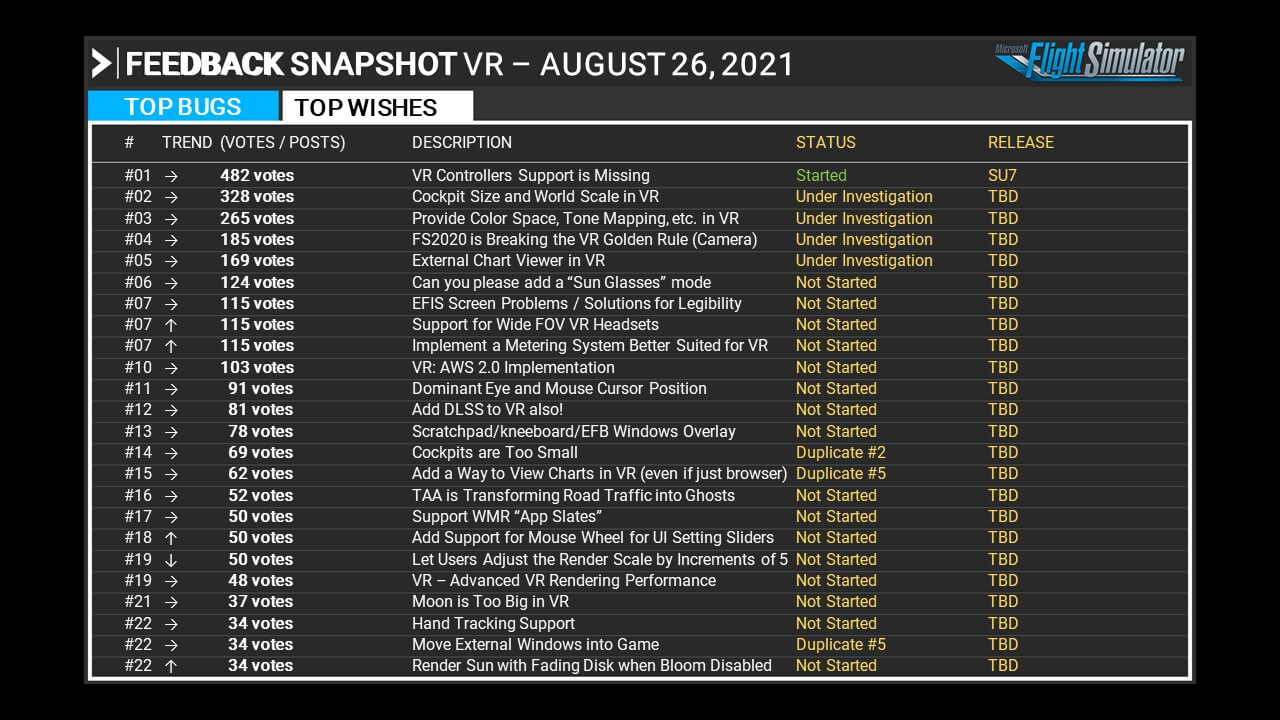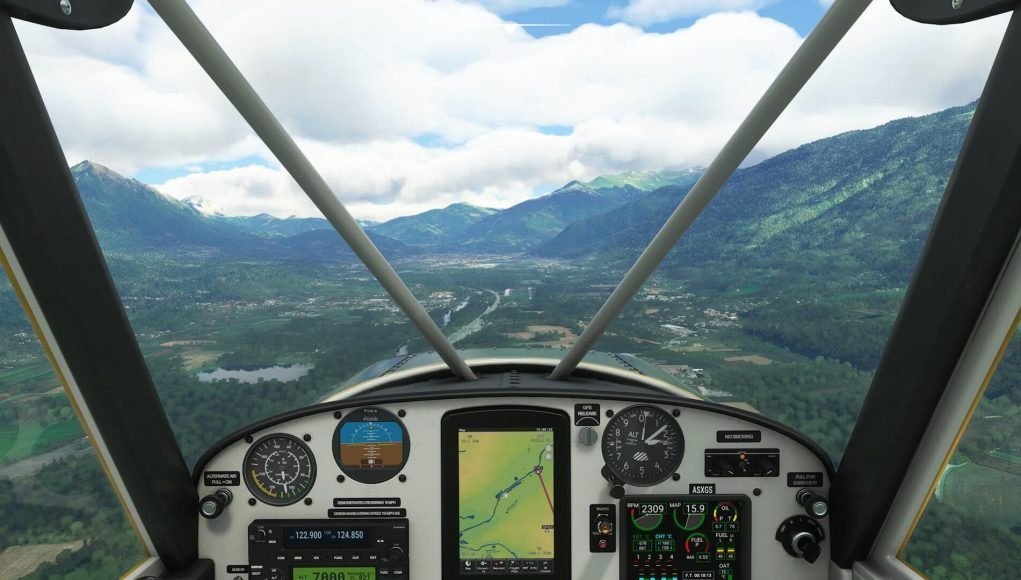Microsoft Flight Simulator (2020) features PC VR headset support, although it’s notably missing the ability to use VR motion controllers. Now developer Asobo has signaled that VR controller support is finally coming, and is slated to land sometime in mid-November.
Asobo posted its next development roadmap, which details a few of the things the studio wants to accomplish in the next few months. The roadmap shows that Sim Update VII is planned to arrive at some point in mid-November.

Reading further into the game’s ‘Virtual Reality Feedback Snapshot’, which is an ongoing outlet for user-generated topics and bug reports, the studio says it’s now addressing VR motion controller support.
Bringing it to the top of the list with 482 votes, you’ll see VR controller support has already been bumped up from ‘Under Investigation’ to ‘Started’, with it slated to release at the same time as Sim Update VII.

VR support arrived in Microsoft Flight Simulator back in December 2020 as a free update to the game on PC, which includes support for SteamVR headsets such as Valve Index, Oculus Rift S, HTC Vive, and Windows VR headsets.
In the meantime it’s received a few significant updates, which brought much needed performance improvements to the graphically-intense game.
Although VR motion controllers aren’t the best input method—that would be a HOTAS setup—it’s certainly slated to bring more immersion to what has proven to be a highly detailed and magnificently large game.







